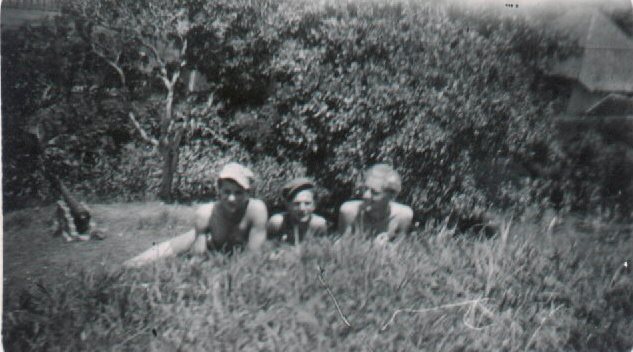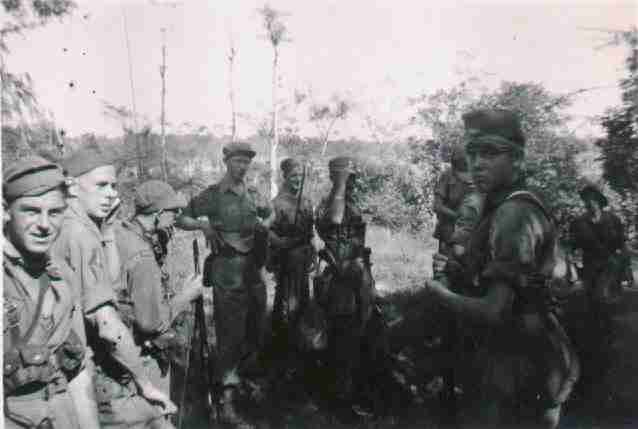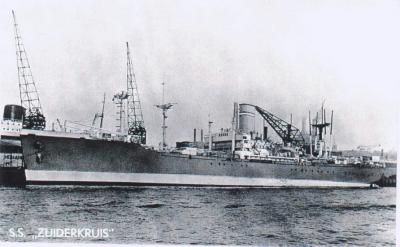 |
Semarang Diamond Award
Semarang Diamond Award |
Indonesia - Jungle Warfare |
My father volunteered to go to Indonesia, at that time called the Dutch East Indies, from March 13th, 1946 to January 25th 1948.
The Queen of the Netherlands had promised the Indonesian people in 1942 that they would be freed from occupation after the Japanese capitulation. The Dutch did not go as aggressors but to help the people of Indonesia because many civilians were still held captive by Japanese soldiers and Indonesia's Sukarno guerrillas. These men had the task of cleaning up the territory of Indonesian Nationalists in the area of the town of Semarang, Java. The 1st battalion Stoottroepen Regiment took part in the First Police Action aimed at removing the Indonesian Republic government.
After the capitulation of Germany many members of the Stoottroepen volunteered to liberate Indonesia. My dad was a member of the 1st support batallion. After helping the 9th US army they went to Harskamp in the province of Gelderland, Holland to prepare to go to Indonesia.
These men left the Netherlands via England October 13th, 1945 on the steamship Alcantarra arriving 31 days later in Malaka to undergo a period of training from November 13th, 1945 to March 10th, 1946. They arrived at their final destination of Semarang, in the middle of Java of Netherland Indies March 13th, 1946. They remained there until February 1948 finally arriving home on March 18th, 1948 on the Het Zuiderkruis.
During my dad's stay in England and Malaya the troop received military training. Malaya was an intermediate stop as the Dutch were not allowed by the British to enter the Dutch Indies at that time, on order from Lord Mountbatten, C.I.C. of the Southeast Asia Command. Even though the Dutch had 37 ships in the Allied Pool the British kept out of Indonesia until March 1946. It was and still is strongly believed by some of the Dutch veterans who fought in Indonesia that if they had been allowed to go directly into Indonesia a lot more lives could have been saved - the women and children still held in Japenese camps.
One thing my dad did tell my mother, and she told me was that the Dutch soldiers had been promised that there would be working large weaponry available to them when they arrived in Indonesia. When they landed the weapons were there but not workable, the British had filled everything with sand.
In the first few months after this pioneer group landed and while waiting for another ship to bring the army across my dad was responsible for the heavy Mitrailleurs (machine-gunner) section under the command of Hein Verbrugge. After some months the Dutch were issued Canadian and British carriers so my dad learned to drive the brengun carrier (light tanks) which he did until the day he went home. Up until the arrival of the bren-carriers the men had to drag the machine guns and 3" mortars around on foot, which was very heavy going patrolling with the heavy packs and with a constant threat of terrorist ambush day and night. During his stay he was awarded the rank of Corporal - section Commander. His platoon commander, Mr. Verbrugge told me my daddy "always applied himself for the full 100%, whom you could place in any situation, and was very conscientious. You can tell your little son that he can be proud of his Opa."
The main task of this pioneer group was to build and repair bridges as well as remove mines and boobytraps. They often had to face not one but two enemies -- the human with which they had a struggle or fight -- and the environmental, mosquitos that infected many with malaria and the wetness of the jungle, often causing what was called foot rot.
It was not very good over there. People lay on the streets very, very hungry and things were no better for the Dutch soldiers sent to help, they were very hungry too. One soldier, Mr. H. Winkens went there weighing 78 kg. and arrived home weighing only 59 kg. Reinforcements, the 13 RJ finally arrived at the end of 1947.
As Mr. Winkens wrote "It was a pity that almost 50 soldiers died over there."(I don't know if Mr. Winkens was speaking about the number of casualities suffered by the battallion or the company but I do know the total number of casualties was in the thousands.)
Thanks to Mr. Korremans I have a map of the Territory of action for the 1e battalion, 1st Regiment Stoottroepen from July 1st to August 8th, 1947.
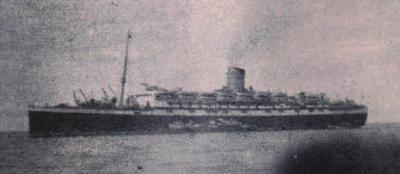
The following information and photograph were taken from the book Schakel tussen twee Werelden (Link between two worlds) by A. Lagendijk published by de Bataafsche Leeuw 1991. It was translated into English and sent to me by Tom Andersen of Denmark. The book is from the collection of the Institute for Maritime History.
Build 1927 by Harland & Wolff in Belfast (Northern Ireland)
Owner Royal Mail Lines in London
Size Length 199,9 metres, Width 23,9 metres, 22.209 BRT
Speed 18 knots, 2 screws, 20000 PK turbines
Passengers 2359 military and repatriates
Scrapped 1958 in Osaka (Japan) as Kaisho Maru
Sister ship Asturias
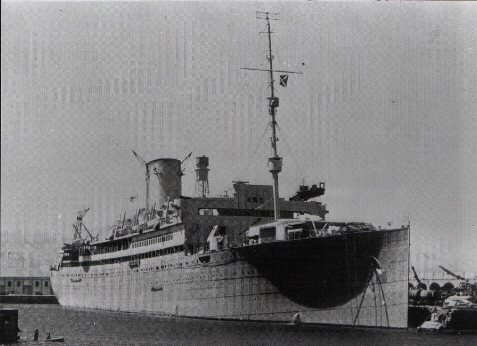
Alcantara was owned by Royal Mail Lines in London a shipowner who maintained a freight and passenger service to Brazil and Argentina. It was build in 1927 together with Austoria as motor ship and was the biggest ship in Great Britain with propulsion. In 1934 she got turbines installed by the firm, which build her Harland & Wolff, which meant to speed rose to 18 knots. She had had long motor funnels, which was made longer and she got a new bow. In 1939 – before Britain started the war – the Alcantara was put into use as a help cruiser and the foremost funnel was removed. Therefore it is possible to see photos of her and Austurias with two low, two high or only one funnel.
On 28th July 1940 she got into a battle with the famous German raider Thor by which the Englishman was damaged in the machine room and the German ship got away. Alcantara sailed to Rio to be repaired. In 1943 her job was changed and she become a troopship for which she was altered in Birkenhead. It was not before 1944 and well into March before she was ready for this duty. At the end of the war hundreds of soldiers had to be returned to their homeland like Australia and New Zealand. A service for which she was put into use but in November 1945 she brought some Dutch soldiers to Malacca. She was supposed to sail to the strait Karimata but was recalled to Port Dickson in Malacca. The troops was put on land here and the ship sailed from Singapore to Southampton with 2359 repatriates. They did not go any further from there and the passengers who had the Netherlands as destination was brought to Amsterdam by Sibajak This ship was smaller and had to make the trip twice.
In 1947 the Englishman was again altered to civilian duty and in October 1948 it continued to sail on its old route. In 1958 it was sold as scrap in Osaka.
Mr. Mac Traas sent me his remembrances of life on the Alcantarra and I had to include them on this site.

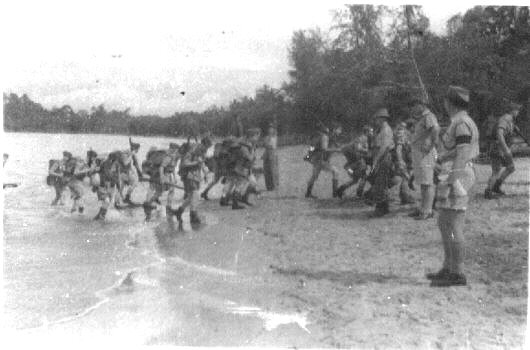
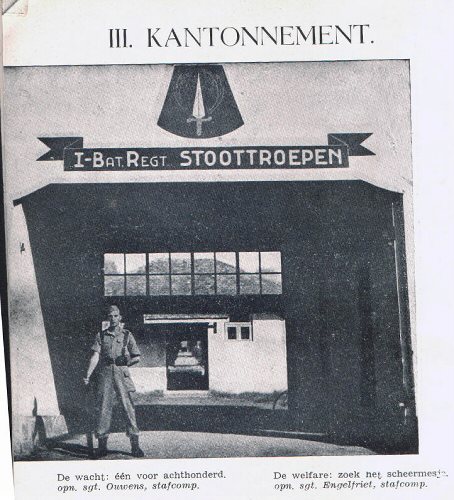
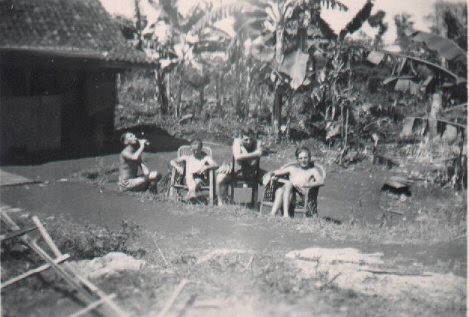
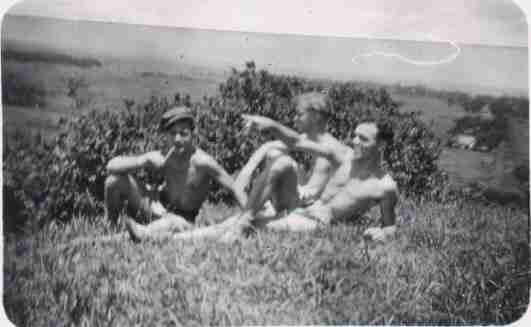
In the left hand photograph above my dad is sitting in the far right hand chair and in the other photograph he is the guy with the hat on.
